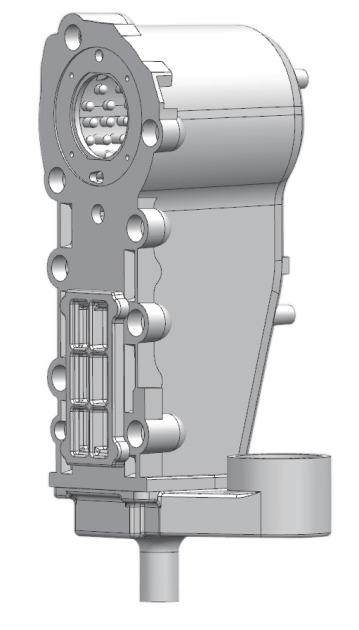- Afrikaans
- Albanian
- Amharic
- Arabic
- Armenian
- Azerbaijani
- Basque
- Belarusian
- Bengali
- Bosnian
- Bulgarian
- Catalan
- Cebuano
- China
- China (Taiwan)
- Corsican
- Croatian
- Czech
- Danish
- Dutch
- English
- Esperanto
- Estonian
- Finnish
- French
- Frisian
- Galician
- Georgian
- German
- Greek
- Gujarati
- Haitian Creole
- hausa
- hawaiian
- Hebrew
- Hindi
- Miao
- Hungarian
- Icelandic
- igbo
- Indonesian
- irish
- Italian
- Japanese
- Javanese
- Kannada
- kazakh
- Khmer
- Rwandese
- Korean
- Kurdish
- Kyrgyz
- Lao
- Latin
- Latvian
- Lithuanian
- Luxembourgish
- Macedonian
- Malgashi
- Malay
- Malayalam
- Maltese
- Maori
- Marathi
- Mongolian
- Myanmar
- Nepali
- Norwegian
- Norwegian
- Occitan
- Pashto
- Persian
- Polish
- Portuguese
- Punjabi
- Romanian
- Russian
- Samoan
- Scottish Gaelic
- Serbian
- Sesotho
- Shona
- Sindhi
- Sinhala
- Slovak
- Slovenian
- Somali
- Spanish
- Sundanese
- Swahili
- Swedish
- Tagalog
- Tajik
- Tamil
- Tatar
- Telugu
- Thai
- Turkish
- Turkmen
- Ukrainian
- Urdu
- Uighur
- Uzbek
- Vietnamese
- Welsh
- Bantu
- Yiddish
- Yoruba
- Zulu
12 月 . 15, 2024 12:09 Back to list
Pressure Drop Analysis in Shell and Tube Heat Exchangers for Efficient Design Optimization
Understanding Pressure Drop in Shell and Tube Heat Exchangers
Shell and tube heat exchangers are widely used in various industrial applications for efficient heat transfer between two fluids. One of the critical factors affecting the performance of these heat exchangers is the pressure drop across the system. This article explores the concept of pressure drop in shell and tube heat exchangers, its causes, implications, and methods for mitigation.
What is Pressure Drop?
Pressure drop refers to the reduction in pressure that occurs as a fluid flows through the heat exchanger. This drop is an essential parameter to consider because it impacts the overall efficiency of the heat exchange process. In shell and tube heat exchangers, pressure drop can be attributed to frictional losses and changes in direction of the fluid flow.
Causes of Pressure Drop
1. Frictional Losses As fluid flows through the tubes and around the shell, it encounters resistance due to the contact with the tube walls and other surfaces. This resistance leads to a loss of pressure, which is proportional to the flow rate and the characteristics of the fluid.
2. Changes in Flow Direction The design of shell and tube heat exchangers typically involves multiple bends and turns, especially in the shell side. Whenever a fluid changes direction, it experiences a localized increase in turbulence, resulting in additional pressure drops.
3. Viscosity of the Fluid The physical properties of the fluid, such as viscosity, play a significant role in determining pressure drop. Higher viscosity fluids tend to create more resistance and, consequently, a higher pressure drop.
4. Scaling and Fouling Over time, deposits can build up on the tube surfaces, increasing the resistance to flow. This fouling can significantly increase the pressure drop across the heat exchanger and reduce its overall efficiency.
Implications of High Pressure Drop
A high pressure drop can lead to several unfavorable conditions, such as
pressure drop shell and tube heat exchanger

- Reduced Heat Transfer Efficiency An excessive pressure drop can reduce the effective flow rate of the heat exchange fluids, leading to insufficient heat transfer and less efficient cooling or heating. - Increased Energy Consumption To maintain the desired flow rates and heat transfer efficiency, pumps may need to work harder, resulting in increased energy costs. This can lead to heightened operational expenses and lower overall efficiency.
- Equipment Damage Over time, continuous high pressure drops can lead to increased wear and tear on pumps and other system components, potentially resulting in costly repairs or replacements.
Mitigation Strategies
To manage pressure drop effectively in shell and tube heat exchangers, several strategies can be employed
- Optimal Design and Sizing Careful design and selection of heat exchanger dimensions based on the specific application can minimize pressure drop. Appropriate tube diameters and lengths should be chosen to achieve optimal flow characteristics.
- Regular Maintenance Implementing a routine maintenance schedule to clean and inspect the heat exchanger can help reduce fouling and scaling, thus minimizing pressure drop.
- Use of Flow Modifiers Installing devices like flow straighteners or turbulators can help improve the flow characteristics, thereby reducing the adverse effects of turbulence on pressure drop.
- Material Selection Choosing materials that minimize friction can also contribute to lower pressure drops. For instance, smoother tube surfaces can significantly reduce resistance in fluid flow.
Conclusion
Pressure drop is a critical parameter in the operation of shell and tube heat exchangers. Understanding its causes and implications allows engineers and operators to design effective systems that maintain efficiency, reduce energy consumption, and prolong the lifespan of equipment. Through appropriate design, regular maintenance, and the implementation of effective mitigation strategies, the adverse effects of pressure drop can be managed, ensuring optimal heat exchanger performance.
-
Durable Cast Iron Water Main Pipe | AI-Optimized Design
NewsAug.05,2025
-
8mm Thin-Walled Cast Steel Manhole Cover Pallet Bottom Ring | Durable
NewsAug.04,2025
-
Premium Cast Iron Water Main Pipe: Durable, Corrosion-Resistant
NewsAug.03,2025
-
Durable Cast Iron Water Mains | AI-Optimized Systems
NewsAug.02,2025
-
High-Efficiency Propane Boiler for Baseboard Heat | Save Energy
NewsAug.01,2025
-
Premium Source Suppliers for Various Gray Iron Castings
NewsJul.31,2025


